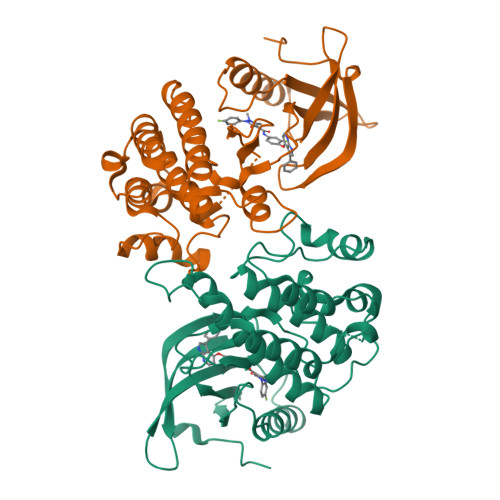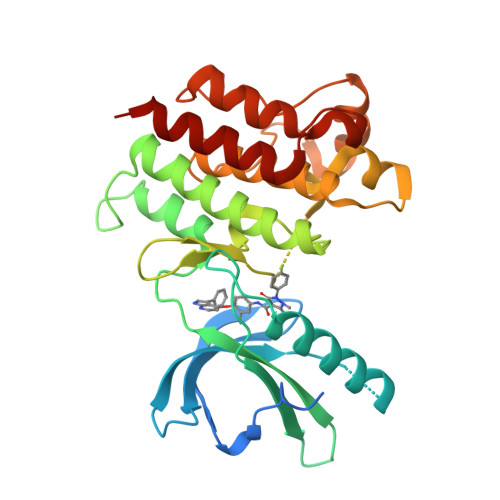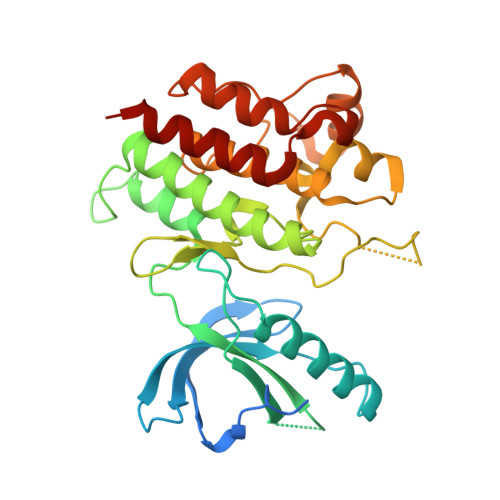Generating Selective Leads for Mer Kinase Inhibitors-Example of a Comprehensive Lead-Generation Strategy.
Nissink, J.W.M., Bazzaz, S., Blackett, C., Clark, M.A., Collingwood, O., Disch, J.S., Gikunju, D., Goldberg, K., Guilinger, J.P., Hardaker, E., Hennessy, E.J., Jetson, R., Keefe, A.D., McCoull, W., McMurray, L., Olszewski, A., Overman, R., Pflug, A., Preston, M., Rawlins, P.B., Rivers, E., Schimpl, M., Smith, P., Truman, C., Underwood, E., Warwicker, J., Winter-Holt, J., Woodcock, S., Zhang, Y.(2021) J Med Chem 64: 3165-3184
- PubMed: 33683117
- DOI: https://doi.org/10.1021/acs.jmedchem.0c01904
- Primary Citation of Related Structures:
7AVX, 7AVY, 7AVZ, 7AW0, 7AW1, 7AW2, 7AW3, 7AW4 - PubMed Abstract:
Mer is a member of the TAM (Tyro3, Axl, Mer) kinase family that has been associated with cancer progression, metastasis, and drug resistance. Their essential function in immune homeostasis has prompted an interest in their role as modulators of antitumor immune response in the tumor microenvironment. Here we illustrate the outcomes of an extensive lead-generation campaign for identification of Mer inhibitors, focusing on the results from concurrent, orthogonal high-throughput screening approaches. Data mining, HT (high-throughput), and DECL (DNA-encoded chemical library) screens offered means to evaluate large numbers of compounds. We discuss campaign strategy and screening outcomes, and exemplify series resulting from prioritization of hits that were identified. Concurrent execution of HT and DECL screening successfully yielded a large number of potent, selective, and novel starting points, covering a range of selectivity profiles across the TAM family members and modes of kinase binding, and offered excellent start points for lead development.
Organizational Affiliation:
Oncology R&D, AstraZeneca, Cambridge CB4 0WG, United Kingdom.




















